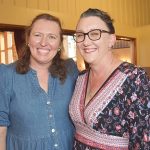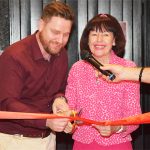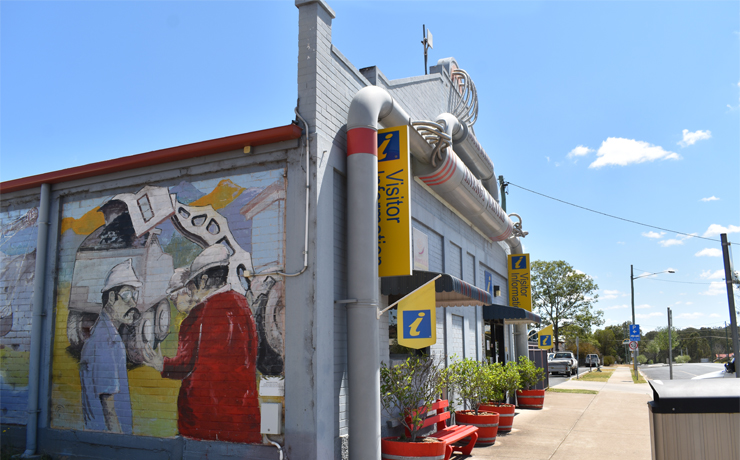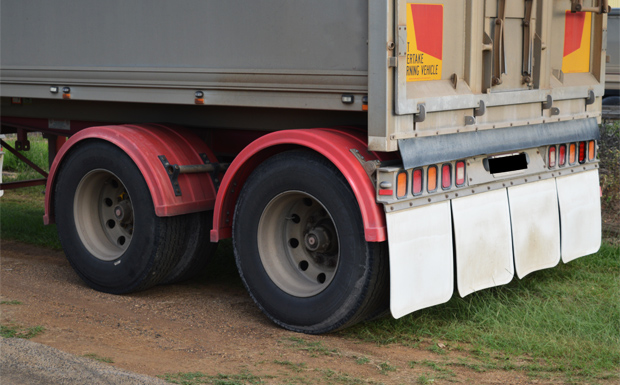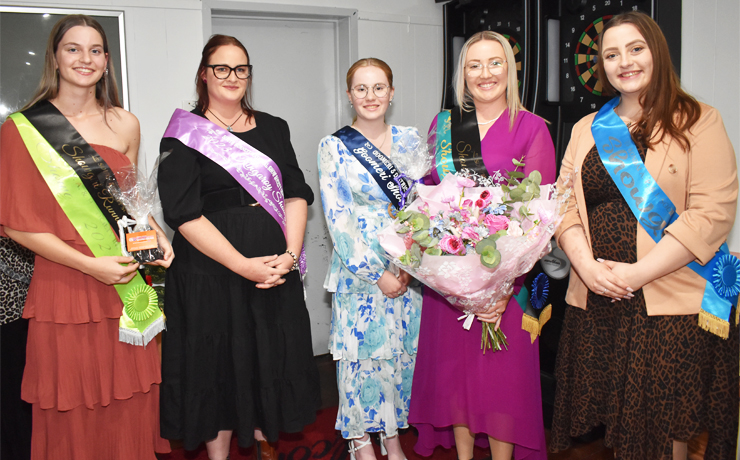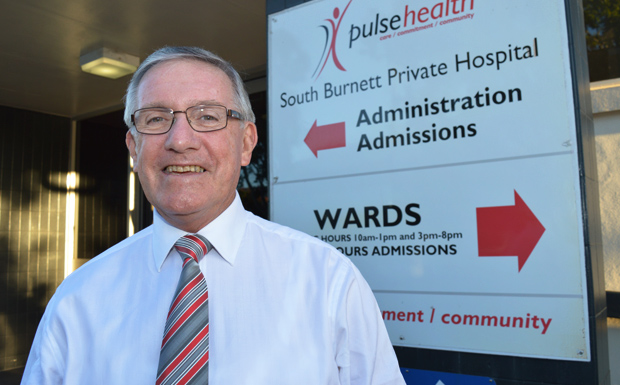
April 7, 2016
The Lady Bjelke-Petersen Community Hospital could re-open as early as June or July, restoring up to 15 full-time jobs and reinjecting an estimated $2.6 million a year into the region’s economy, both lost when Pulse Health ceased operating the hospital on June 30, 2015.
On Thursday afternoon, South Burnett Regional Council agreed to accept a proposal from South Bank Day Hospital Pty Ltd to take over the facility’s operation.
South Bank Day Hospital Pty Ltd is a fully owned subsidiary of the not-for-profit Queensland Eye Institute Foundation.
The meeting heard South Bank Day Hospital wanted to expand into regional Queensland, and news in late February that businesswoman Gina Rinehart had pledged $600,000 towards getting the facility re-opened galvanised the company into fast-tracking its plans.
The firm approached the Council shortly after Mrs Rinehart’s announcement.
However, as the election was only a few days away and the Council was in caretaker mode, further action had to be postponed until a new Council was elected and sworn in.
Thursday afternoon’s special meeting was the first chance the newly elected Council had to act on the proposal.
* * *
Under an agreement reached with the company during the past week, the hospital buildings and grounds will continue to be owned by the South Burnett Regional Council through its wholly owned non-profit company South Burnett Community Hospital Foundation Ltd (SBCHF).
SBCHF manages the hospital building and currently holds the hospital’s licence, but will transfer it to South Bank Day Hospital.
SBCHF is run by a voluntary board made up of three Council representatives, three medical professionals, two community representatives and one senior representative from the hospital operator, South Bank Day Hospital.
Its primary function is to build relationships with the community, to fundraise for the hospital, and to provide working capital to the hospital’s operator, if required.
On Thursday afternoon Councillors voted to approve the following arrangement, which will apply during the initial two-year start-up period while South Bank Day Hospital settles in:
- SBCHF will contribute $100,000 per year to buy hospital equipment, which will be owned by Council
- The $600,000 contribution by Mrs Rinehart will be used by SBCHF to fund the purchase of the hospital equipment. It will also be used to provide working capital for hospital operations, and to underwrite any losses South Bank Day Hospital makes while it gets the hospital re-established, on the understanding these funds will be repaid when the hospital returns to profitability
- No rent will be charged to the hospital operator
- Tenant rental income from QML and the Glendon Street Medical Practice, who both lease areas at the hospital, will now be paid directly to SBCHF and will be used to provide working capital
- Council will continue to spend about $100,000 per year on building maintenance and services, which will be paid for out of its existing $12 million depreciation fund as part of Council’s normal asset maintenance program
In return, South Bank Day Hospital will restore the hospital’s operations including specialist services, surgical procedures and limited overnight stays for patients recovering from surgery; and will provide regular progress reports to SBCHF.
* * *
Mayor Keith Campbell said the decision was the best possible outcome for everyone, since it would restore the hospital’s services – and potentially bring new health services to the region in future – at no cost to ratepayers.
Councillors Gavin Jones and Roz Frohloff agreed.
They said they had both opposed bringing the hospital back to life during their Council election campaigns if ratepayers had to put any money towards it, but had both changed their minds in recent days.
They told the meeting that after they had become more fully informed about the Council’s plan and had met with both the CEO of South Bank Day Hospital and Council’s Economic Development Manager Phil Harding, they were happy to reverse their former positions.
“I have no doubt this (hospital) will turn out to be a very sound investment going forward,” Cr Jones said.
Cr Terry Fleischfresser said his experience on the Darling Downs Health Board, and his earlier experiences on Kingaroy Shire Council with purchasing the St Aubyns Hospital, had left him in no doubt the project was sound.
He said he was certain the hospital could be profitable with better management.
The meeting heard the region would directly benefit from the hospital’s re-opening in four ways:
- There was great community support for the facility, as evidenced by the 10,000 signatures to keep the hospital open
- The facility generated approximately 15 FTE positions and contributed an estimated $2.6 million – directly and indirectly – to the region’s economy each year
- When fully operational, the facility allowed local residents to be treated locally by visiting specialists, avoiding long, expensive and sometimes uncomfortable trips to Toowoomba or Brisbane to obtain the same medical services
- Growth in health services was identified as one of the region’s priority economic development projects, because the provision of high quality health services and educational facilities was crucial to attracting new businesses.
The meeting was also told that a due diligence report prepared by Ernst and Young and a business plan for the hospital’s future operation prepared by specialist hospital consultant Leith MacMillan had both shown the hospital could be run profitably if some changes were made to the model used by former operator Pulse Health.
And while there was always an element of risk, Council’s own risk exposure could be minimised by working with a partner with hospital management expertise, in this case South Bank Day Hospital.
Councillors agreed, and approved the new arrangement unanimously.
In the same motion, councillors also agreed to formally change the hospital’s name from South Burnett Private Hospital to the Lady Bjelke-Petersen Community Hospital to emphasise the project’s strong ties to the region’s communities, and also to honour Lady Flo Bjelke-Petersen’s contributions to the region.
* * *
Afterwards, the Council approved a further motion to make some modifications to the constitution of the South Burnett Community Hospital Foundation.
The principal changes were that non-Council directors must either be South Burnett residents or people interested in contributing to the provision of quality hospital care, and the Chairman of the Board will be elected by Board members and does not have to be an elected member of Council.
Other changes were that the Mayor and CEO will have the authority to attend Board meetings as observers; that the Board can only spend money on hospital equipment, building improvements, community functions, statutory requirements, and providing working capital for hospital operations; and that Board members are to receive no remuneration from the company.
The meeting was told no Board member had ever received any money from SBCHF but the constitution was silent in this area.
The purpose of the change was to codify this to put the matter beyond doubt.
* * *
Earlier the same day at the statutory post-election meeting, Crs Ros Heit and Danita Potter were appointed as the Council’s representatives on the SBCHF Board, along with Economic Development Manager Phil Harding.
Mr Harding will also act as the Board’s company secretary
Related articles:
- Special Meeting To Vote On Hospital
- Hospital Operator Steps Forward
- Rinehart Pledges $600,000 For Hospital
- Consultant Inspects Hospital Building
- Council Appoints Health Specialist
- Deputy Mayor Speaks Out On Hospital
- Mayoral Candidate To File Formal Complaint
- Council Votes To Save Hospital
- Candidate’s Solution ‘Laughable’: Tessmann
- What You Voted For
- Views From Two Candidates
- More Delays Likely Over Hospital
- Hospital Meeting Now On Thursday
- Brown Blasts Council Over Hospital
- Hospital’s Fate Decided Next Week
- South Burnett Private Hospital Decision Delayed
- Hospital Decision Soon
- Council To Vote On Running Hospital
- Council Candidate Claims ‘Ego, Emotion’ For Hospital Decision
- Talk Of ‘Plan B’ Angers Mayor
- Doors Still Open At Private Hospital
- Mayor Hits The Road
- What More Can We Do?
- Huge Response To Hospital Campaign
- Why I Want To Be Mayor
- Mayor Appeals For Public Support
- Council Still Looking For Hospital Operator
- Still A Glimmer Of Hope For Hospital
- Hospital Deadline Looming
- Council In Talks With Qld Health
- Why We Need Our Private Hospital
- Closure Would Be ‘Absolute Disaster’
- Fingers Crossed For Private Hospital
- Mayor Off To Brisbane For Hospital Talks
- Mayor Gutted Over Hospital Closure







